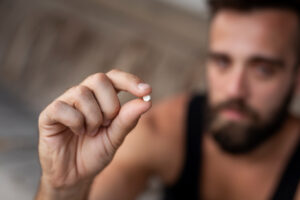Stoked and coked. The coca in Coca Cola was cocaine until 1929. Now the corporate giant has bought about of fifth of Monster Energy Drinks for 2.15 billion dollars, hoping to further caffeinate its products and profits–and us.
Why Did Coke Buy Monster?
Money. The energy drink “niche” is growing around the world, with sales up as much as 8 to 10 percent a year. Fizzy soft drinks, like Coca-Cola, face flat sales. Part of the reason is the realization, particularly in countries like Mexico, that fizzy, sugared soft drinks are a major cause of obesity, diabetes and heart disease. Yet corporate managers want growth. Caffeinated, sugared energy drinks are “driving the market.” After the announcement, Coca-Cola’s stock went up 1 percent. At one point, Monster’s stock price rocketed 30 percent.
Why Are Sugar-Caffeine “Drinks” So Popular?
Kids love them. With names like Monster Sniper Hitman and Monster Bull Sperm, they promise a “hit” of transgressive energy marketed to young ones–a new kind of “high.” They are also legal and easily available. General advertising for sugar-caffeine “energy” drinks relies heavily on stars whose atheleticism ranging from “extreme sports” to Nascar racing.
What’s In Them?
While many of the most popular drinks contain copious sugar, virtually all use caffeine and and a variety of caffeine like molecules. Monster products often contain guarana, with drugs like theobromine and theophylline, which occur in tea and possess very similar effects to caffeine. Thus the caffeine level of these drinks tells only a single part of the “energizing” story. They also include a mind numbing passel of “additives” ranging from vitamins to amino acids to flower extracts. There is virtually no long term human data on what these additives ultimately do combined with caffeine and sugar. Generally, energy drinks contain about 140 to 200 mg of caffeine, plus a lot of sugar. Monster Energy Drink has 27 grams of sugar in a 16 ounce can. Concerned with obesity, diabetes, and cancer risks, the WHO is putting out a recommendation that people consume 25 grams of less added sugars per day. You can get all of that in one drink.
Why Do Kids Love Them?
Most humans like sugar. Many of us can’t get enough. Caffeine provides lots of us with a sense of energy, and the ability to hold off sleep. That’s a big problem for children and teenagers. To fully regenerate their bodies and let their brain fully learn, teenagers need nine to nine and a half hours, on average, of sleep. Younger children need more sleep. They often don’t get it. Many high school students are sleeping six to seven hours a night–not counting cell phone interruptions. The result: Lots of kids sleep through their classes. A quick “hit” of Monster or other drinks can “solve” the problem. However, caffeine and theobromine and theophylline can last quite a while. Caffeine’s half life–how long it takes for half of it to get chemically deleveraged, is about 5 hours–on average. Not everyone is average. Thus with its current use, caffeine frequently will lighten or dramatically diminish nighttime sleep. Which, of course, can be “fixed” by further and higher doses of energy drinks. That produces a very “loyal” clientele that can’t function without their energy drink “hit.” Which increases sales. Sadly, less sleep often means weight increase. No sleep, no proper body regeneration. Which allows sugar plus caffeine drinks to directly and indirectly fuel the obesity epidemic among kids and adolescents. The lack of sleep can ruin their chances to learn and grow normally. Of course, many energy drink makers also market “relaxation drinks” to “solve” their energy drink exacerbated sleep problems.
Is Caffeine Addictive?
Yes, it can addict you–and habituate many. Other problems with frequent high caffeine dose include arrhythmias, irritability, and anxiety. For many years researchers induced panic attacks in people with high dose caffeine. Caffeine can be also be a wonderfully useful drug, particularly in the time honored forms of coffee, and in related drugs, in tea. Importantly, coffee and tea include dozens of other substances besides stimulants. Used regularly, coffee may cut risks of diabetes, Parkinsonism and perhaps–perhaps–Alzheimer’s Disease. We don’t know enough about energy drinks to see if any of these useful effects accrue to them, particularly given their complex mix of high levels of sugar and additives.
Are There Alternatives?
Of course. People can become alert and alive through physical activity, or going out in sunlight and socializing. Coffee and tea work, though as Starbucks can tell you, they can also be superloaded with sugar and caffeine. However, coffee and tea have long established social rituals, and are often cheaper than energy drinks. Another rarely used alternative is caffeine pills. At 200 mg a tablet, they can be obtained for about ten cents each in bottles–and can be cut with a knife into smaller doses. Add orange juice, and you have a much cheaper simulacrum of an energy drink–without the brilliant, flashy packaging.
Is There A Silver Lining In This Story?
Countries outside the US are very aware that sugared energy drinks are a public health threat – with increased obesity, diabetes, and heart disease rates they can ill afford. Diabetes, partly fueled by sugar consumption and lack of sleep, is a particular scourge. Here prevention is much, much cheaper than cure. Coca Cola is a giant international enterprise much attuned to its public image. Already attacked for fueling obesity, its managers will be scrutinized for how it markets energy drinks to children and adolescents. Sniper Hitman and Bull Sperm may reside on media radar for quite some time. Published on August 28, 2014 by Matthew J. Edlund, M.D. in The Power of Rest



